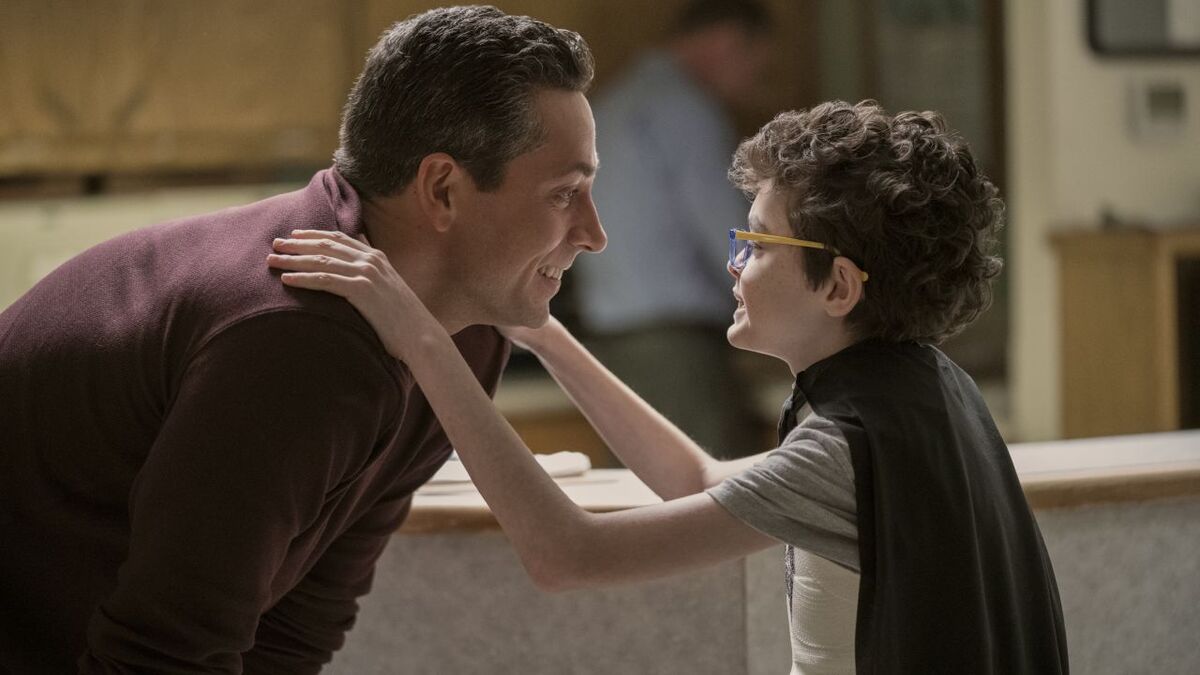
With an emphasis on legal and social process instead of twisty plotting, American Crime ditches many of the familiar staging grounds for high drama, where the frustrated police captain chews out the obsessive lead detective, or the prosecutor weasels out a confession in front of a courtroom circus. Instead, Ridley kicks over the rotting log that is his Modesto, casting an eye on the tinier ecosystems making up the greater whole. Arraignments and bail bond hearings are some of the day-to-day challenges facing those connected to the suspects, just as media optics and intra/interfamily dysfunction divide those connected to the victims. Whereas most crime procedurals will ignore such judicial aspects, or jump ahead months to get their mess tidied up in an hour, American Crime willfully makes each step of the initial prosecution, and continuing investigation a drawn-out slog.
That the show exists in the state that it does is maybe the best argument for why viewers should give such heavy material a shot. Many of American Crime’s strengths owe to how supportive ABC seems to be of Ridley’s disaffected, slow burn approach. Save for the occasional dip into histrionics by the spare soundtrack, and almost-universally solid cast, American Crime often chooses to underplay those moments that would constitute the BIG IMPORTANT COMMENTARY ON AMERICA scenes you’ll find in other dramas looking to make a statement.
Still, this is going to be a difficult cold fish to sell to those just interested in having another diverting web of lies to untangle. The relative un-sexiness of American Crime is a problem both intensified and ameliorated by its complementing aesthetic. The show not only looks great, but also has a visual language that softly challenges bog-standard network TV direction. Ridley, who directed the first two episodes and sets the formula for the two to follow, puts the emphasis on his actors, not his words. When exposition from an incidental character is needed, the camera will usually stay fixed and focused on the party receiving the information. Static shots and smartly doled out long takes put the performances at the forefront of almost every scene, and whenever Ridley finds room for deep space and multiple planes of action, he’ll use it.
Though far from revolutionary, the directorial emphases of American Crime may be as off-putting to some viewers as its subject matter. Ridley loves to keep shots flatly staged and unbalanced, with characters moving into and out of the frame as necessary. Compared to the attention-holding swoop pans and rapid editing of most network television, the length and stillness of many scenes from American Crime are glacial. Sure, anyone can thrill at the frenetic chaos of the famous long take from True Detective, but will folks have the patience to appreciate the care and craft American Crime puts into an unbroken 3-minute dialogue scene that’s more 12 Angry Men than Birdman?
Despite the often languid visual pacing, American Crime manages to move quickly all the same, thanks in large part to an editing trick that the show hasn’t quite mastered through its first four hours. Jump cutting lets Ridley barrel through the dead air of many scenes, while mismatched dialogue has characters hearing what it is they’re meant to be reacting to as we see them reacting.
It’s an effect that demands more of the viewer’s attention than their time, and when it works, it works wonders: in the first episode, Huffman, as Matt’s bitterly determined mother, is given a humanizing note when breaking the news to her other son. The scene closes with dialogue of her goodbye matched to the image of her holding the phone close for comfort after the call has ended, compressing, but not ignoring a moment of grief the script otherwise wouldn’t have time for. In other instances, though, it’s clear that American Crime is trying to do too much with too little airtime, excising footage to give you the cliffs notes of an emotional beat, or jumping around to enliven an otherwise purely functional scene.
All the same, it’s the formal daring in Ridley’s series that’s in some ways more confrontational than the thicket of racial and economic tension American Crime wades through. It’s begrudgingly entertaining, but through the first four hours, never less than engaging, both as scabrous social exposé, and network-unfriendly visual story. If Ridley can elevate all of the show’s plots to the level of detail and nuance some have shown thus far, American Crime could end up asking the viewer a more interesting question than just whodunit: what would you do?










Published: Mar 2, 2015 09:33 pm